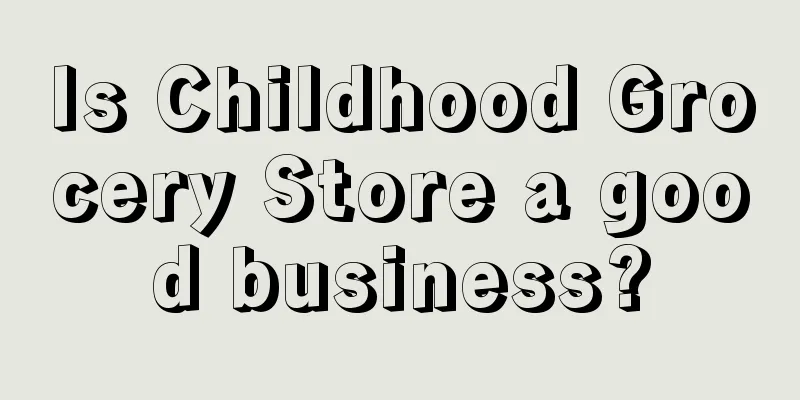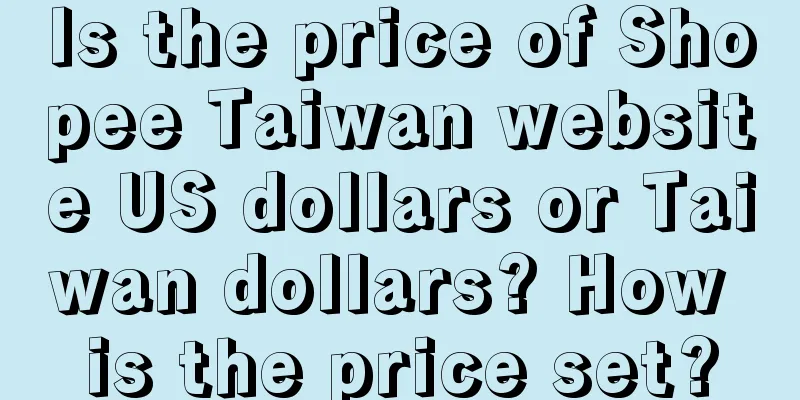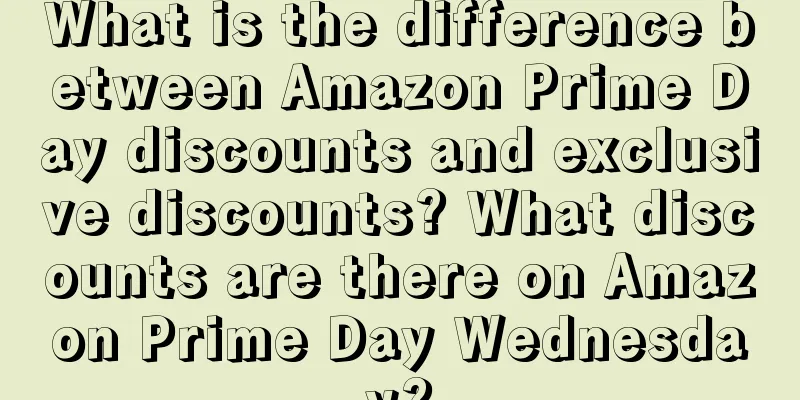Is Childhood Grocery Store a good business?

I don't know when it started, but grocery stores with words like "childhood", "childhood" and "when I was young" have appeared on Internet-famous streets in many cities. However, when you walk into these portals of childhood memories, you will find that the prices are no longer as friendly as they were in childhood. The price of 50-cent Jinshengzi has increased tenfold, and the 10-cent spicy strips have become "snack assassins"... Despite this, there are still many people willing to pay for them, and these grocery stores once gained traffic on the Internet. White Rabbit, Little Chef, Fig, Sparkling Water; Mobile phones, pagers, cassettes, and Subor game consoles; Slam Dunk, F4... These objects and elements full of age are basically standard equipment in every childhood grocery store. Childhood Grocery Store is not the name of a specific store, but refers to a type of retail store. They usually sell items from the 1980s, 1990s and the beginning of this century, including snacks, toys, stationery, daily necessities, etc. The store is also decorated in the style of that era, deliberately creating a nostalgic retro atmosphere of the early days of reform and opening up. There are many posts about the childhood grocery store on Xiaohongshu. How do they behave when grocery stores start selling "memories"? 1. The main purpose is to "return to the past", but the price cannot return to the pastAfter a rough review of cultural industry reviews , this type of grocery store has been opened in different cities across the country, and is mainly concentrated in scenic spots, pedestrian streets and commercial plazas. Searching for keywords such as "childhood" and "when I was a kid" on Dianping.com, you can find that childhood grocery stores have been opened in many cities across the country. Although the names of these stores may look different, they are essentially the same - focusing on childhood memories. Even on the same pedestrian street, there are several similar childhood grocery stores. As for the decoration style inside the store, it is almost all nostalgic and retro: color-saturated signs, military green chandeliers, wall slogans with a sense of age, woven shopping baskets... Not only has the store paid enough attention to the visual aspect, but the classic children's songs and pop songs from the 1980s and 1990s played in the store also try to make customers dream back to their childhood. However, the moment you see the price, you are instantly brought back to reality. The products sold in the childhood grocery store and their characteristics can be summarized into two categories: One category is old items, focusing on nostalgia. This category is usually popular since the 1980s and 1990s, such as White Rabbit Toffees, Bubble Gum, Dried Figs, Maltesers, Football Chocolate, Monkey King Pills, Sticky Flower Biscuits with a small flower on the top, etc. These are childhood snacks of the "post-80s" and "post-90s". Even compared with the current market price, their prices have increased several times. Taking a childhood grocery store in Guangzhou that the author visited as an example, a bottle of "Fig" with a net content of 10 grams is sold at 4 yuan in the store, while on a certain e-commerce platform, the same brand and the same net content of "Fig" is sold at 9.9 yuan for 12 bottles, which is less than 1 yuan per bottle; a cup of "Wangzai" tea jelly with a net content of 132 grams is sold at 12 yuan in the store, but the price range of different stores on the e-commerce platform is 4 to 6 yuan per cup. △The net content of 358 ml of "Huayang 1982" old Guangzhou flavor soda has a price tag of 12 yuan per bottle casually pasted on the shelf, but on the Tmall official website, a box of 6 bottles costs less than 30 yuan. The other category is new items with old packaging. This type of snacks does not belong to the "taste in the memory" of the public, but they have also been mixed into the shelves of grocery stores with retro packaging. The price is also high, and the product information printed on the outer packaging is little and hidden. For example, in a childhood grocery store visited by the author, there is a drink called "Grandma's Kettle", which is sold at 8 yuan per bottle in the store, but on a certain e-commerce platform, even if you buy it at a small price, each bottle costs less than 2 yuan. Because it is not a well-known brand, looking through its product information, you will find that its printing effect is poor and difficult to distinguish. In fact, there have been many media reports about nostalgic snacks becoming "price assassins". So, how did these grocery stores that focus on childhood memories come to be? 2. Selling childhood memories: the layout of the “nostalgia economy” on the tip of the tongueNowadays, "reminiscing about the past" and "missing childhood" have become emotional outlets for a large number of people. To take a closer look, from Wang Xinling's resurgence in popularity to the hot screen of the "Slam Dunk" movie, waves of "memory killing" are being staged. In the context of today's consumption upgrade, many businesses have turned their attention to the "nostalgia economy" and are making arrangements, linking nostalgic elements to various joint names, stores, restaurants, etc., and using emotions to monetize. "Wenheyou", an internet celebrity restaurant that combines traditional folk cuisine and trendy culture, has become a check-in spot for young people because of its retro and nostalgic decoration style. The nostalgic card of "childhood" is particularly popular in the catering and retail industries. Take KFC and McDonald's, two veteran players in the childhood category, for example. Whether it was the Peppa Pig toys launched by KFC on June 1 last year or the Tetris game console in the shape of Chicken McNuggets launched by McDonald's on June 1 this year, they all became popular online. On e-commerce platforms, Taobao and Pinduoduo also had many "childhood memories", and snacks with the words "post-80s and post-90s" attracted a lot of traffic. For the "post-80s" and "post-90s" people who are the backbone of society, their childhood was during the reform and opening-up period of the 1980s and 1990s. The snacks, toys and daily necessities that were popular at that time are like symbols of time, evoking their childhood memories. Data from the "2022 Young People's Life Consumption Observation - Food and Beverage" released by the Crawley Index Research Institute shows that 94.7% of young consumers will buy snacks and drinks from their childhood because of nostalgia. Sensing such business opportunities, childhood nostalgic grocery stores came into being. As mentioned above, most childhood grocery stores are opened in tourist attractions, Internet celebrity streets or large shopping malls. They just cater to the main force of travel consumption, allowing consumers across decades of age to find slow memories in these small items that are opposite to the fast-paced life. Relying on the precise control of traffic, they have become Internet celebrities in Internet celebrity streets, and even become a social symbol, attracting consumers to check in and pay. Of course, consumers are also well aware that the items bought in these grocery stores only awaken their childhood in an instant. Faced with prices that are dozens of times higher, they are actually paying for their emotions and psychology. Childhood grocery stores have captured the psychological trend of collective nostalgia and entered the public eye by creating a "new" consumption scene with "old" items. They have opened up the market by providing an immersive consumption experience with a sense of age and retro flavor. Its essence is emotional marketing. Some people may ask: "Isn't this just a small shop?" But in fact, compared with ordinary individual small shops, these childhood grocery stores with similar styles are almost all opened in the form of franchise stores or chain stores, taking the branding route. For example, the popular childhood grocery store brands such as "Looking for Childhood Snacks Shop", "Childhood Nostalgia Xiaopang Theme Store" and "Fall in Love with Childhood" all have their own chain operation companies. In terms of business model, the main ones are direct chain and franchise. In terms of space design, they have unified styles of doorheads, materials, clothing and decoration. In terms of product configuration, they mainly focus on nostalgic snacks, toys and daily necessities from the 1970s to 1990s. Compared with other snack brands, they have more categories and are more comprehensive. When it comes to comprehensiveness, compared with life service convenience store chain brands such as Meiyajia, 7-Eleven, and FamilyMart, they have distinctive style and differentiated consumer experience. The recruitment and promotion of the childhood nostalgic chubby theme store However, due to its chain franchise nature, although different brands of childhood grocery stores have different names, the goods they sell are actually similar. They may be very successful for a period of time, but in the long run, this consumption scene created under an easily replicable business model will inevitably have problems such as lack of novelty, rampant retro trends, and serious homogeneity. 3. How to effectively continue the taste of childhood?For a long time, the places that evoke nostalgia in the eyes of the public are bars, retro restaurants, historical and cultural museums, etc. For new consumption scenarios such as childhood grocery stores, many consumers will find them novel and interesting in an instant, and think that it is worthwhile to shop in the store and bring back some memories; the merchants probably still follow the logic of ordinary retail industry - as long as they sell products and services, the business is considered successful. However, when consumers criticize the "IQ tax" when they encounter inflated prices or find that the products do not meet their expectations, or even receive a large number of negative reviews and reports, can merchants realize that they do not actually understand the true meaning of the "nostalgia economy". On the one hand, the potential of nostalgic consumption is huge, but on the other hand, nostalgic products only focus on feelings and ignore experience. The asymmetry between supply and demand prevents the huge market demand from being effectively released. Childhood grocery stores are popping up everywhere, and some people are recommending them, while others are complaining about them. In reality, many nostalgic products always "rush in" after discovering a theme . The similarities in childhood grocery stores are actually a result of insufficient development of nostalgic theme culture, which remains superficial. So, how can the childhood grocery stores, which mainly target the consumer groups of the post-80s and post-90s, continue the childhood flavor in everyone’s memory? The above-mentioned report from the Crawley Index Research Institute pointed out that young people have a strong sense of nostalgia and a low tolerance for the taste in their memories. If the taste is the same as they remember, they will buy it for a long time. If the taste changes or changes a lot, they will only buy it once to satisfy their nostalgic mood and pay tribute to the classics. Therefore, in order to make consumers feel that they are getting value for money, first of all, in terms of quality, the taste in the public's memory should be restored as much as possible . In addition to doing a good job of quality control, the rationality of the source of goods, whether the introduction of products is correct and appropriate, etc. should also be considered to avoid the phenomenon of "selling dog meat under the guise of sheep meat". Secondly, the price should be fair and reasonable. Although the Childhood Grocery Store focuses on nostalgic products, it is essentially a new business format. Consumers are curious about trendy brands that sell childhood memories, but they will also choose low-frequency trial and error. Rational consumers care about the price as well as the taste of the product itself. Because they are endowed with feelings and creativity, the products in the Childhood Grocery Store are often more expensive than those in ordinary retail stores. This is normal and understandable. Consumers can pay a premium for feelings and nostalgia, but if it is too outrageous and the cost-effectiveness is not high, it will often backfire. Nostalgia does not mean longevity. "Nostalgia" is just a selling point for a brand, not for the sake of nostalgia. The ultimate goal is to promote consumption. Therefore, while ensuring its own quality and service, the Childhood Grocery Store must also upgrade its marketing strategy. In other words, in addition to snacks and toys, what else can be sold, what is more worth selling, and what services can be developed in addition to directly selling products. The public's memory of a certain period often comes from some special symbols or carriers, such as an object, a taste, a group, or some phenomenon. These symbols or carriers have been precipitated over the years and gradually engraved with the imprint of history and culture, and finally evolved into the symbolic culture of a certain era or place. The "taste" of childhood is actually a cultural carrier rooted in history and region. The above-mentioned report by the Crawley Index Research Institute pointed out that one of the concepts of young people in terms of taste consumption is "trying new specialties", and different generations have different consumption mindsets. For example, those born in the 1980s prefer authentic specialties with local characteristics; those born in the 1990s will take the initiative to try new and niche specialties from all over the country, and some people said that "even if the reviews are not good, I will still want to buy them and try them out." The main purpose of nostalgic consumption is to mobilize the collective memory of a certain group to achieve economic benefits. For the "post-80s", "post-90s" and even the "post-00s" who are gradually becoming the main consumers, nostalgia is no longer just a catharsis of collective memory and a simple expression of emotion, but more of a personalized product and service. If you want to play the "nostalgia" card for a long time and effectively, the test is the ability of emerging formats such as childhood grocery stores to explore, integrate and express regional culture. The regeneration and reproduction of culture through the renewal and iteration of space and formats is a way to maintain vitality for both businesses and the development of urban cultural tourism. IV. ConclusionUltimately, the value of nostalgic business is given by time, and it is likely to be redefined as time goes by and the main consumer groups are updated and iterated. The new generation of consumers represented by the "post-00s" may not agree with the brands purchased by their parents, and the "memory killing" that has temporarily successfully hit consumers today may become a thing of the past. The childhood grocery store is just a microcosm of the nostalgic economy. How to improve products and optimize operations based on understanding market demand, so as to continue to resonate with consumers, will be a proposition that most brands that want to play the "emotional card" need to explore tirelessly. Author: Liu Qing; Editor: Shi Guang; Editor: Bandao Source: Official Account: Cultural Industry Review (ID: whcypl), the top new media in China’s cultural industry. |
<<: Good copywriting is not in the official account
>>: When consumers are in a state of fatigue, how can summer specialty drinks stand out?
Recommend
Sold 20 million in more than a year: Good repurchase in the pet private domain depends on these 4 insights
In the context of the rapid growth of the pet mark...
How to be a shein agent? Can shein make money?
Shein, as the world's leading fast fashion bra...
What are the requirements for entering Shopee's overseas warehouses? What are the advantages of overseas warehouses?
Shopee is an e-commerce platform in Southeast Asia...
With 1.58 million followers in a single month, Xiaohongshu has seen a "big comeback" by the end of the year
In just one month, the number of followers increas...
You can’t make money by shooting Douyin videos because you are doing it wrong!
Everyone knows the monetization ability of Douyin ...
Alipay is doing live streaming, what is the future potential?
Many Internet companies want to develop live broad...
With over 700 million views, why are “awkward” street interviews so popular?
Recently, a "very new" street interview ...
How to solve the problem of Amazon-related account suspension? Can I get it back by appealing?
Generally, if there is an association problem with...
How to join Shopee cross-border e-commerce? How to run a Shopee store?
Shopee, like AliExpress, is a cross-border e-comme...
How to get “her” to pay?
This article provides a comprehensive and in-depth...
If B station cancels the display of playback volume, will it make UP hosts who do things for love no longer worry about money?
Bilibili announced that it will use the number of ...
How to ship orders from Shopee? What is SLS?
Cross-border e-commerce is quite popular nowadays,...
100 Keyword Predictions for 2023 | Technology and Metaverse (11-20): Integration, Positive Energy and Sustainability
WPP's brand Wunderman Intelligence released it...
User operation practice: fresh supermarket user operation case sharing
When user import is abnormal and you can't fin...
I built a powerful data early warning model
The first thing to do in data analysis is to clari...









